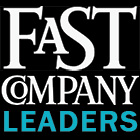
In 2011, the digital landscape underwent a significant shift that will have profound effects on business in 2012.
The challenge is that hardly any business leaders noticed. That’s not their fault, however.
Although the impact of technology on business and consumer behavior was widely reported, in-depth reports on what to do next or how this will affect their business specifically were scant at best.
What the social media gurus aren’t telling you is that the landscape for business isn’t changing because of social media, it’s changing because consumer expectations are evolving.
Your customers are empowered through technology where social media becomes only part of the disruption.
Your job in 2012 is to not embrace new technology with arms wide open, but instead understand it and learn which disruptive technologies separate you from existing and potential customers.
What’s unique about “connected” consumers is that they find and share information differently than their more traditional counterparts. They make decisions differently than the everyday consumers you’re used to engaging as well.
But keep in mind, the connected do not displace your traditional customer, they simply expand your opportunity to grow your business.
How you’re marketing, selling, and servicing customers today is largely missing this new breed of consumer, and thus limiting your overall opportunity for growth.
To reach the connected consumer, you must first walk in their footsteps. It takes research, not guesswork. It takes understanding, not skepticism. And it takes a dedicated, not generic or approximated, approach.
Why? Because while your traditional consumer relies on tangible media such as TV, radio, newspapers, direct mail, email, Google search or static websites, the connected consumer is not blindly seeking information, they are reliant on the right information finding them, in the right places.
For example, your new prospective customer lives on their smartphones and tablets. They network with friends, family and the businesses they support in mobile and social networks.
They check in to locations to signal to people nearby that they’re in the neighborhood and to alert businesses that they’re ready to interact live.
Consumers install apps to better make decisions and to broadcast those decisions to their social networks.
What’s more, they research products and services based on the experiences of their peers in real-time, and in turn, share their experiences with everyone else to shape and steer the experiences of others.
In doing so they expand the idea of “audiences” to something far more efficient and expansive — an audience with an audience of audiences.
While it seems foreign or dismissible to those who are not actively embracing or even dependent on disruptive technology, connected consumers are only growing in size, magnitude and influence. Ignoring them is a step toward digital Darwinism.
Today, no company is too big to fail or too small to succeed. Simply knowing your customer is one thing. But, understanding how they make decisions and participating in that process influences behavior while building meaningful relationships.
Connect with me: Twitter | LinkedIn | Facebook | Google+
Order The End of Business as Usual today…
 Follow @FastCoLeaders for all of our leadership news, expert bloggers, and book excerpts.
Follow @FastCoLeaders for all of our leadership news, expert bloggers, and book excerpts.
Reprinted with permission from BrianSolis.com
Brian Solis is the author of Engage and is one of most provocative thought leaders and published authors in new media. A digital analyst, sociologist, and futurist, Solis's research and ideas have influenced the effects of emerging media on the convergence of marketing, communications, and publishing. Follow him on Twitter @BrianSolis, YouTube, or at BrianSolis.com.
[Image: Flickr user whologwhy]
